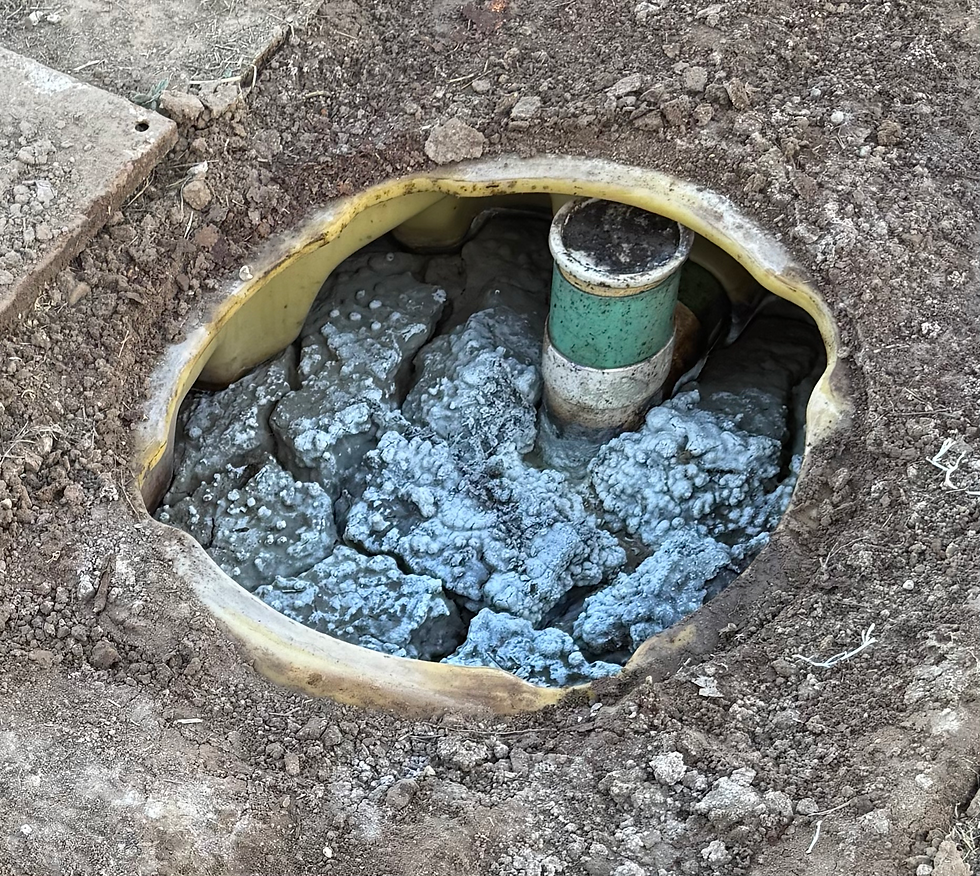Do You Know Where Your Septic Tank Is?
- matadorsepticpumpi

- May 25, 2022
- 3 min read

There are so many perks of owning a home with a septic system — it’s cost efficient, durable, and environmentally friendly! However, in addition to all the good that comes with a septic tank, some complications can come with it too. For instance, if you aren’t the original owner of your home (or even if you are), do you know where your septic tank is? It might sound like an easy question, but locating your septic tank can be harder than you think.
A leaking septic tank
When you have a septic tank, you have to make sure that it’s in good working order and well maintained. But life happens. If you aren’t diligent about proper maintenance, then your septic tank can quickly turn into a problem that needs immediate attention . As much as a leaking septic tank sounds like a bad thing — and it typically isn’t great — it can actually be a good method for locating your septic tank.
When your septic tank leaks or its drainfield fails, the grass around the tank can turn bright green. And while bright green grass might seem like a dream come true for many homeowners, a leaking septic tank can be like a nightmare. So, if you’re unsure where your septic tank is, then check for any grassy areas that are brighter than the rest of your property. The bright grass might lead you straight to your tank, and help you get it fixed as soon as possible.
Sewer pipes
Another method for you can try to locating your septic tank is following your sewer pipes. Standard septic tanks are installed parallel to your home’s sewer line that runs from the house to the yard or rest of the property. Usually, you can find a clean out pipe coming up from the ground next to the house. The septic tank tends to be found in a direct line from the pipe.
All septic tanks will be located at least 5 feet away from your home, but most tanks will be closer to 10 feet away and even up to 25 feet or more. Although this method for locating your septic tank is accurate, it can be time consuming.
County land records and inspections
Still another great method for locating your septic tank is checking with your county’s land records office. As a standard practice, counties keep track of building permits that show where septic tanks are located on a property. So, if you’re willing to go through the red tape, you can find the location of your septic tank. .
Additionally, if you just purchased the property and want to know where the septic tank is, then you can ask for a diagram to be included in your home inspection.. Both of these methods involve less legwork, but still might take some time.
While there are certainly ways you can find your septic tank on your own, it typically isn’t an easy process, and it can take a lot of time, too. In addition, searching for your septic tank alone can be pretty dangerous, especially if you’re having an emergency and are searching in the dark or bad weather.
So if you need to locate your septic tank quickly, efficiently, and properly, then call Matador Septic. We can help you locate your tank, as well as handle any cleaning, pumping, or repairs that it might require. Septic tanks are great and definitely a good investment, but they can also be complicated to maintain. Let us help you when you need it!






Comments